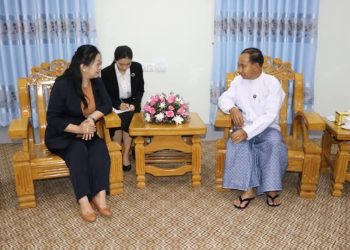The Department of Archaeology and National Museums announced that nearly 75 percent of the historical heritage buildings in the Inwa Ancient Cultural Heritage Zone were damaged by the powerful Mandalay earthquake.
The earthquake damaged ancient buildings in Mandalay and the Inwa region. Although a list of pagodas, stupas, and brick temples was previously taken in the Inwa Archaeological Zone, it was reported that there were no enclaved pagodas. When the damage list was systematically taken, enclaved pagodas built to cover older, original small pagodas were found in the collapsed pagodas. They were 1 pagoda at Pagoda No. 93 near Sotapang Pagoda, 2 at Pagoda No. 316 and 318 in the Daw Gyan Pagoda Complex, and 1 at Pagoda No. 21, Kyaeni Muttaw pagoda.
Another pagodas were found:1 pagoda near a farm of Ko San Ngwe near Mya Thein Tan Pagoda, 2 near a farm of U Tun Naing behind Mingalar ward, 1 at Shin Pin Khraythi, 1 pagoda at West Avenue, 1 at Palaik Group of Pagodas, 1 at In Raung Group of Pagodas in Kyaukse, 1 at Tawdwin Village in Kyaukse Township, Mandalay, 1 at Bayani in Mandalay and more totaling 13 pagodas. Similarly, triple-enclosed temples were found: 1 pagoda at Pindaya, 3 at Myitngwe and 1 at Satoemyopyin.
It was also stated that preliminary field investigations have revealed that the Bayani Pagoda located between 21st and 22nd Streets on 81st Street in Mandalay has a stupa inside that is believed to have been built in the late Inwa period after the outer bricks fell off due to an earthquake. The stupa was also rebuilt once again during the Amarapura period.
In addition, some of the nine pagodas built during the First Inva era in the Inva region have been found renovated, according to initial investigations.
In addition, the Department of Archaeology and National Museums announced that it is systematically uncovering the ancient water palace in the Inva ancient site in Tada U Township, which was said to have been exposed by the Mandalay earthquake, and is working to make it available for public study.




